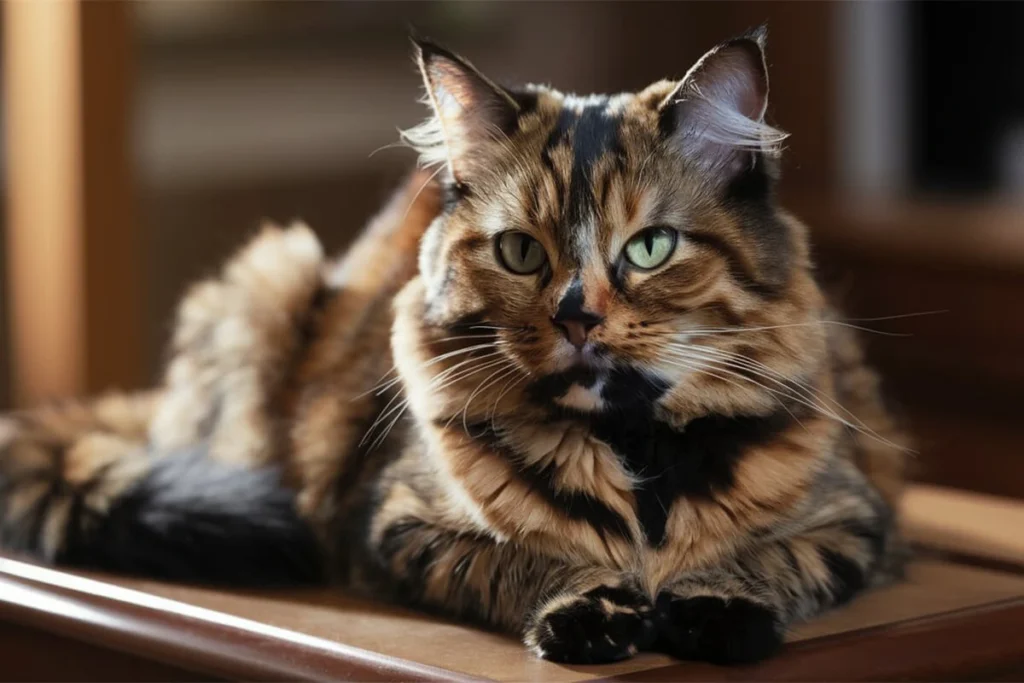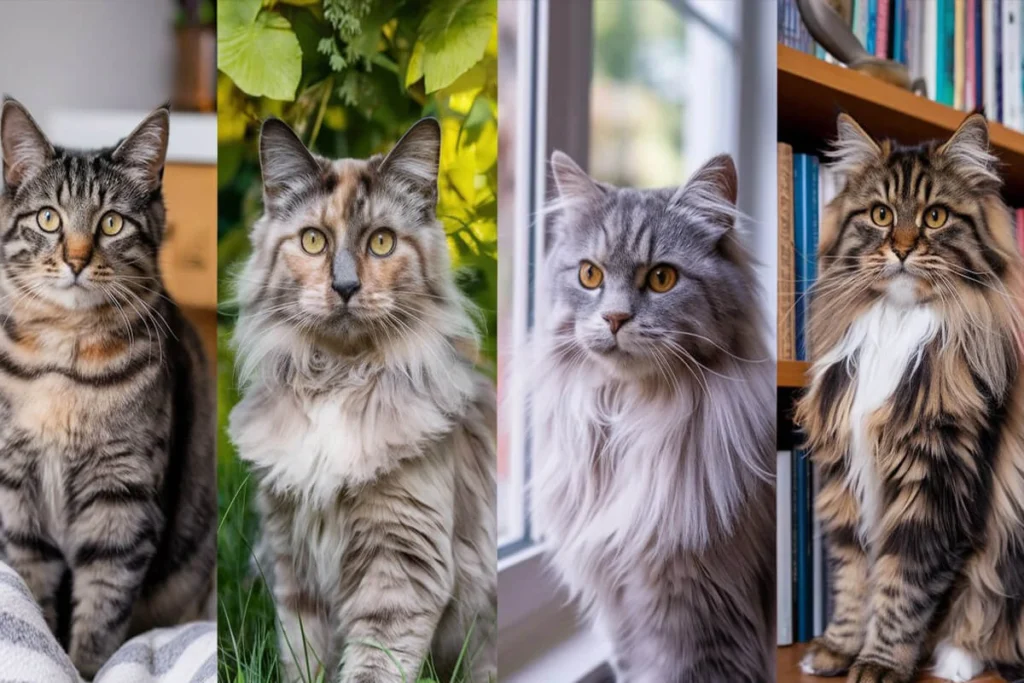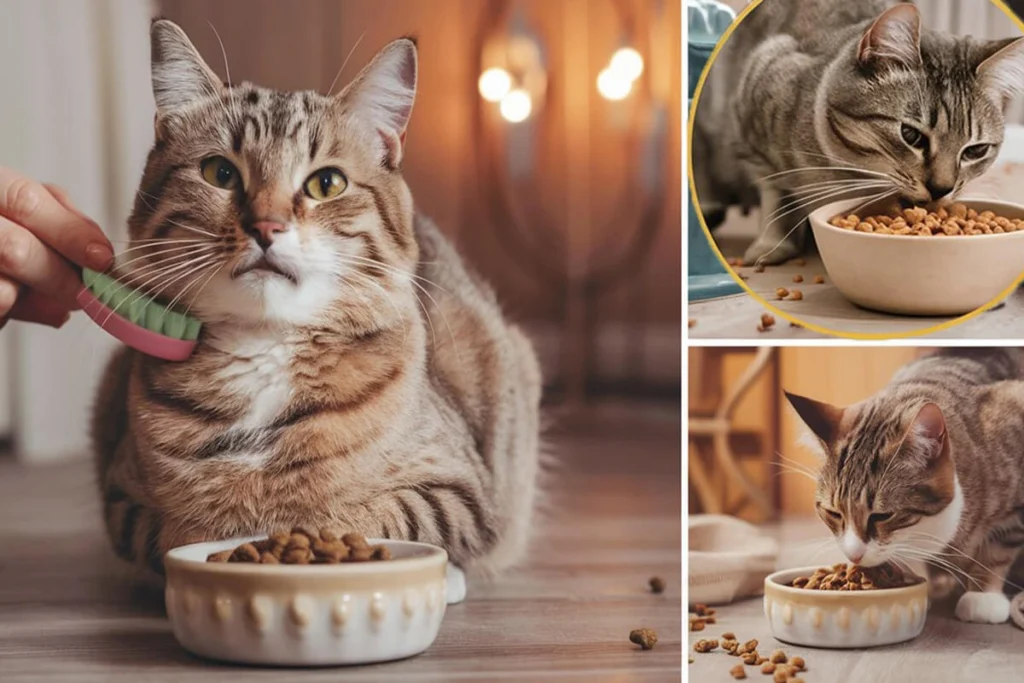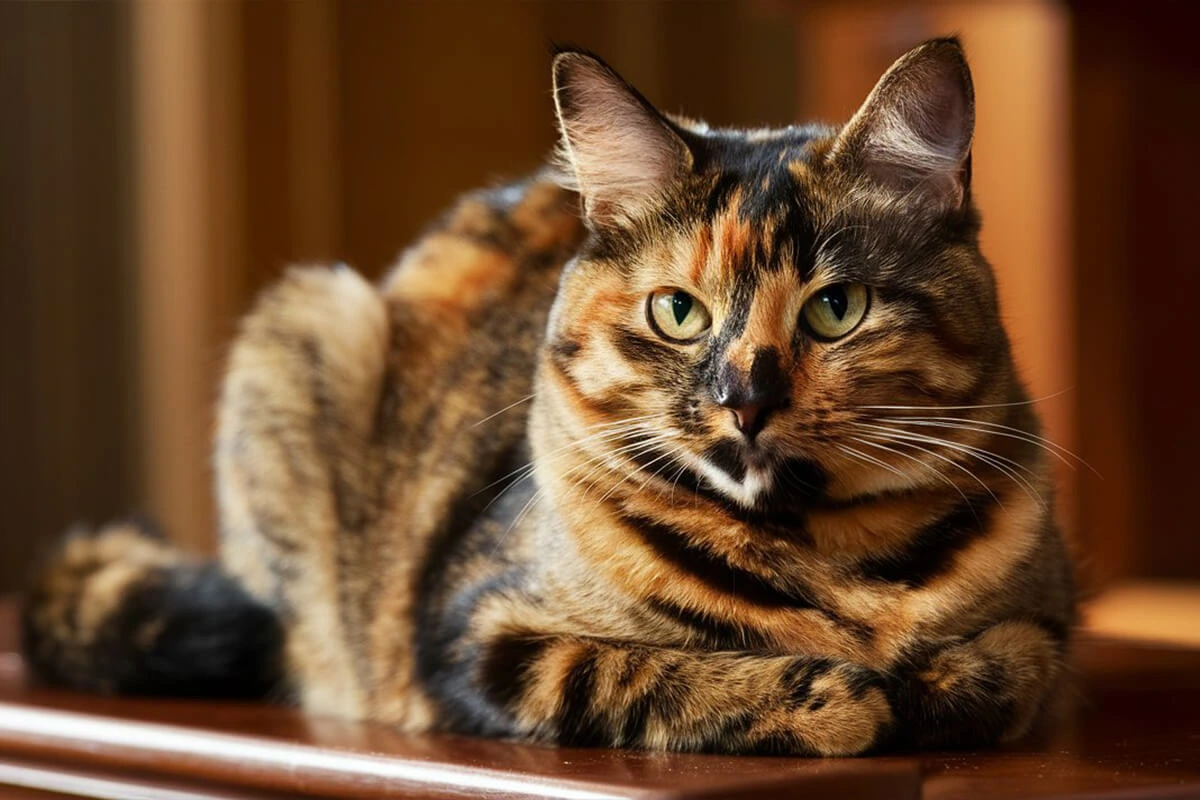Have you ever heard of a Torbie Cat? These stunning felines combine the best of both worlds—the striking tabby patterns and the fiery tortoiseshell colors. Their coats create a mesmerizing mix of swirls, stripes, and patches, making them one of the most eye-catching and unique cats in the world.
Torbie Cats stand out not just for their appearance but also for their personality. Many cat lovers describe them as feisty, playful, and full of charm. Some even believe their coat patterns influence their temperament, much like the well-known “tortitude” seen in tortoiseshell cats.
If you love rare cat colors, fascinating feline genetics, or simply want to learn more about these extraordinary cats, you’re in the right place. In this post, you’ll discover 10 amazing facts about Torbie Cats, from their genetics to their care needs. Get ready to be amazed by these beautiful and lively companions!
What Is a Torbie Cat? Understanding This Unique Feline
Definition of a Torbie Cat
A Torbie Cat, also known as a tortoiseshell tabby, combines the bold, fiery colors of a tortoiseshell cat with the distinctive stripes or swirls of a tabby cat. The name “Torbie” comes from blending “tortoiseshell” and “tabby.” These cats display a mix of orange, black, and brown patches, but unlike pure tortoiseshells, they also have tabby markings such as stripes, spots, or swirls. Their coats create a beautiful mosaic of colors and patterns, making each Torbie Cat visually unique.

How They Differ from Tortoiseshell Cats and Calico Cats
Many people confuse Torbie Cats with Tortoiseshell Cats and Calico Cats, but key differences set them apart:
- Torbie vs. Tortoiseshell:
A tortoiseshell cat has a coat with a blend of orange, black, and brown but lacks any tabby striping. In contrast, a Torbie Cat has the same mix of colors but also features the signature tabby patterns, such as stripes on the legs, face, or tail. - Torbie vs. Calico:
Calico cats have large patches of white in addition to black and orange, creating a more defined, three-color pattern. Torbies, on the other hand, rarely have significant white markings and instead showcase a more blended mix of colors and tabby stripes. - Pattern Recognition:
If you see a cat with a tortoiseshell-like coat but also notice striping, that’s a Torbie. If the coat consists of distinct black, orange, and white patches with no striping, it’s a Calico. A tortoiseshell will have a more marbled mix of colors without any noticeable tabby patterns.
Cat Coat Genetics Behind Their Striking Patterns
The Torbie Cat’s unique coat results from fascinating feline genetics. The orange and black coloration comes from the X chromosome, which means almost all Torbie Cats are female. Male Torbies are extremely rare and typically result from genetic mutations such as Klinefelter syndrome (XXY chromosomes).
Tabby patterns appear due to a separate set of genes that control coat markings. While all domestic cats technically have the tabby gene, it only becomes visible when another gene doesn’t mask it. Torbie Cats inherit both the tortoiseshell color gene and the active tabby pattern gene, producing their distinctive blend of colors and stripes.
These genetics create a wide range of coat variations, meaning no two Torbie Cats look exactly alike. Some display bold striping, while others have more subtle tabby patterns. The result? A stunning, one-of-a-kind cat that cat lovers can’t help but admire!
Torbie Cat Colors and Patterns: A Rare Beauty
Explanation of Rare Cat Colors in Torbies
A Torbie Cat showcases one of the rarest and most visually striking color combinations in the feline world. Their coats blend the bold, fiery hues of tortoiseshell cats with the distinct striping or swirling patterns of tabby cats. Since their color results from a mix of two different coat patterns, their markings create an unpredictable yet stunning mosaic of colors.
Torbie Cats often display a mix of black, brown, chocolate, orange, cream, and even hints of blue or gray. Some have deep, rich tones, while others exhibit muted, pastel-like shades called dilute Torbie patterns. These softer variations appear when the cat inherits a recessive dilution gene, turning black into gray (blue) and orange into a soft peach or cream.
Among all domestic cat coat colors, Torbie patterns stand out as unique and relatively uncommon. Since the genes that create these patterns interact in complex ways, no two Torbie Cats look exactly alike, making them one of the most visually distinctive felines.
Difference Between Torbie vs. Tortoiseshell Coats
Many cat lovers mistake Torbie Cats for Tortoiseshell Cats due to their similar color combinations, but key differences set them apart:
- Torbie Cats have both tortoiseshell colors (black, orange, brown, or gray) and tabby striping on their legs, face, and tail. Their coats may include a mix of spots, swirls, or stripes, depending on their tabby gene expression.
- Tortoiseshell Cats, in contrast, lack the tabby gene. Their coats blend orange and black in a marbled or patchy pattern, but you won’t find distinct stripes or tabby markings on their bodies.
- If you see striping on a tortoiseshell-colored coat, you’re looking at a Torbie rather than a true tortoiseshell.
Common Coat Variations Seen in Domestic Shorthair Torbies and Longhairs
Torbie Cats appear in both shorthair and longhair varieties, each displaying unique coat textures and color expressions:
- Domestic Shorthair Torbies
- Their coats have a sleeker appearance, making the tabby stripes and tortoiseshell patches more defined.
- Shorter fur allows the colors to appear more blended in some cats, while others showcase a bold contrast between stripes and patches.
- Many Domestic Shorthair Torbies have classic tabby swirls, mackerel tabby stripes, or spotted tabby patterns.
- Longhair Torbies
- Their fluffier, more textured fur gives their coat a softer, more blended look.
- The tabby striping sometimes appears less distinct due to the longer fur, but subtle patterns can still be seen, especially on their legs, tail, and face.
- Some long-haired Torbies develop a luxurious, feathered mane around their necks, similar to Maine Coons or Norwegian Forest Cats.

Since Torbie Cats appear in many different breeds, their coat texture and patterns vary widely. Whether short-haired or long-haired, their rare mix of colors and stripes makes them one of the most breathtaking and sought-after felines among cat lovers!
Torbie Cat Personality: What to Expect
Unique Temperament Traits of a Torbie Cat Personality
Torbie Cats have bold, lively personalities that match their striking appearances. Many cat owners describe them as energetic, playful, and full of attitude. Since they inherit traits from both tortoiseshell and tabby cats, their behavior often reflects a mix of both.
- Spirited and Playful – Torbies love to explore their surroundings and stay engaged with their environment. They often pounce on toys, chase after moving objects, and climb to high vantage points. Their curiosity makes them excellent problem-solvers, so they enjoy puzzle toys and interactive play sessions.
- Strong-Willed and Confident – Like their tortoiseshell relatives, Torbie Cats have a reputation for being a bit feisty. Some cat lovers refer to this as “tortitude”—a term used to describe the sassy, independent nature of tortoiseshell-colored cats. Torbies often show determination and won’t back down easily if they set their minds on something.
- Vocal and Expressive – Many Torbie Cats love to “talk” to their humans. They use a variety of meows, chirps, and trills to communicate their needs, whether they want food, attention, or a cozy lap to sit on.
- Loyal and People-Oriented – Despite their strong-willed nature, Torbies can form deep bonds with their owners. They may follow their favorite humans around the house, curl up next to them on the couch, or greet them at the door after a long day.
How Their Feline Coat Patterns Might Be Linked to Behavior
Some cat owners believe that a cat’s coat color and pattern influence its personality. While science hasn’t fully proven this theory, many anecdotal observations suggest that Torbie Cats inherit certain behavioral traits based on their coat type:
- Tortoiseshell Influence: Tortoiseshell cats are known for their fiery and strong-willed personalities, and Torbies often display similar traits. Many Torbie owners notice their cats have bursts of energy, assertive attitudes, and a bit of sass when things don’t go their way.
- Tabby Influence: Tabby cats are generally playful, friendly, and social. Since Torbies have tabby markings, they tend to be more interactive and people-oriented than pure tortoiseshell cats. Their tabby side may also make them more affectionate and adaptable.
- The Genetics Factor: Some studies suggest a link between coat color and behavior due to genetic factors influencing pigmentation and neurotransmitter activity. While this research is still developing, many cat lovers insist that their Torbie Cats have a unique personality shaped by their distinctive coat patterns.
Are Torbie Cats More Independent or Affectionate?
Torbie Cats balance independence and affection, depending on their mood and individual personality. Some Torbies love constant human interaction, while others prefer occasional cuddles on their own terms.
- Independent Side: Their tortoiseshell genetics often make them self-sufficient and headstrong. They enjoy their personal space and might demand attention one moment but retreat to their own spot the next. If they don’t want to be held or petted, they make it very clear!
- Affectionate Side: The tabby influence in their coat patterns makes them more social than typical tortoiseshell cats. Many Torbies love human companionship, seek attention from their owners, and enjoy interactive play. Some even act like “lap cats” and will happily snuggle up next to their favorite person.
- Best of Both Worlds: Torbie Cats often exhibit a mix of these traits, making them exciting and unpredictable companions. One moment, they might demand pets and curl up beside you; the next, they might sprint across the room chasing an imaginary target.
Their dynamic personalities make them an excellent choice for cat lovers who enjoy playful, expressive, and occasionally sassy feline friends. If you’re looking for a cat with character, a Torbie might be the perfect match!
How to Care for a Torbie Cat
Torbie Cat Care Essentials (Grooming, Diet, and Health)
Caring for a Torbie Cat requires attention to their coat, diet, and overall health to keep them happy and thriving. Since Torbie Cats come in both short-haired and long-haired varieties, their grooming needs vary. Their diet should support their energy levels, and regular veterinary checkups help ensure a long, healthy life.
Grooming Needs
- Short-haired Torbies need weekly brushing to remove loose fur and keep their coats smooth and shiny. Since their short fur doesn’t tangle easily, they require minimal grooming.
- Long-haired Torbies need brushing at least two to three times a week to prevent matting and tangles, especially around the neck, belly, and tail. Using a slicker brush or deshedding tool helps reduce shedding and keeps their fur soft.
- Nail trimming every few weeks prevents overgrowth and keeps scratching behavior in check.
- Ear cleaning and dental care help prevent infections and dental disease. Brushing their teeth regularly or providing dental treats can improve oral health.

Diet and Nutrition
- High-protein diet: Torbie Cats stay active and energetic, so they need high-quality protein from sources like chicken, fish, or turkey. Look for cat food with real meat as the first ingredient rather than fillers like corn or soy.
- Balanced nutrients: Taurine, omega fatty acids, and vitamins support healthy eyesight, skin, and coat. Omega-3 and Omega-6 fatty acids help maintain the shine and softness of their fur.
- Proper hydration: Wet food or a mix of wet and dry kibble ensures they get enough moisture, preventing dehydration and urinary tract issues. Providing a cat water fountain encourages them to drink more water.
Exercise and Mental Stimulation
- Torbie Cats have high energy levels and need daily playtime to stay engaged. Interactive toys like feather wands, laser pointers, and puzzle feeders keep them entertained.
- Scratching posts and climbing trees allow them to exercise naturally while keeping their claws healthy and their instincts sharp.
Common Health Concerns and Torbie Cat Lifespan
Since Torbie Cats are not a specific breed but a color pattern, their health depends on the breed they belong to. However, some general health concerns affect many Torbies, especially those with domestic shorthair or longhair lineage.
Common Health Issues
- Obesity: If they don’t get enough exercise or eat too many high-calorie treats, they can gain excess weight, leading to diabetes or joint problems. Regular activity and portion control prevent obesity.
- Urinary Tract Issues: Some cats, especially females, are prone to urinary tract infections (UTIs) and bladder stones. Providing moisture-rich food and plenty of water reduces the risk.
- Dental Disease: Tartar buildup and gum disease are common in cats, leading to bad breath and tooth loss. Brushing their teeth or offering dental treats can help maintain oral health.
- Genetic Conditions: If a Torbie belongs to a specific breed, they may inherit breed-related health concerns. For example, Maine Coon Torbies may develop hypertrophic cardiomyopathy (HCM), while Persian Torbies may be prone to polycystic kidney disease (PKD).
Torbie Cat Lifespan
With proper care, Torbie Cats can live between 12 to 20 years, depending on their breed and overall health. Indoor cats tend to live longer than outdoor cats since they face fewer risks from accidents, diseases, and predators. A healthy diet, regular vet checkups, and a safe home environment contribute to a long, happy life.
Adoption Tips and Responsible Cat Adoption & Pet Care
Adopting a Torbie Cat is a rewarding experience, but responsible pet ownership requires preparation and commitment. Whether adopting from a shelter or a breeder, ensuring a safe, loving home should be the top priority.
Where to Adopt a Torbie Cat
- Animal Shelters & Rescues: Many Torbie Cats, especially domestic shorthairs, end up in shelters waiting for loving homes. Checking with local shelters or browsing pet adoption websites like Petfinder or Adopt-a-Pet increases the chances of finding a Torbie.
- Responsible Breeders: If looking for a Torbie with a specific breed background (such as Maine Coon or Bengal Torbies), working with a responsible breeder ensures ethical breeding practices. Always ask for health records and genetic screenings.
- Avoiding Backyard Breeders & Pet Stores: Unethical breeders may prioritize profits over animal welfare, leading to unhealthy or poorly socialized kittens. Researching adoption sources ensures a responsible choice.
Preparing for a New Torbie Cat
- Create a cozy space: Set up a comfortable bed, litter box, scratching post, and food/water bowls before bringing them home.
- Provide enrichment: Toys, climbing structures, and interactive playtime help them adjust and stay mentally engaged.
- Schedule a vet checkup: A wellness exam ensures they start their new life in good health. Vaccinations, microchipping, and spaying/neutering (if not already done) should be part of early care.
Commitment to Lifelong Care
- Regular vet visits help prevent health issues and ensure vaccinations stay up to date.
- Balanced diet and exercise keep them active and at a healthy weight.
- Providing love and companionship ensures they thrive emotionally and develop a strong bond with their owner.
Adopting a Torbie Cat means welcoming a cat with a one-of-a-kind personality and stunning coat pattern into your home. With proper care, attention, and love, they become affectionate, entertaining, and loyal feline companions for years to come.
Interesting Torbie Cat Facts That Will Surprise You
The Role of Cat Genetics in Their Coat Formation
A Torbie Cat’s striking coat pattern results from a complex interaction of feline genetics. Their unique mix of tortoiseshell and tabby markings comes from specific gene expressions related to coat color, pattern, and inheritance.
Genetic Factors That Create a Torbie Coat
- The Orange (O) Gene: This gene, found on the X chromosome, determines whether a cat’s fur will be orange or non-orange (black, brown, or gray). Since female cats have two X chromosomes (XX), they can inherit both orange and black genes, creating the tortoiseshell effect.
- The Tabby Gene: All domestic cats technically carry the tabby gene, but some have a separate gene that masks the tabby pattern. In Torbie Cats, the tabby gene remains active, allowing stripes or swirls to appear over the tortoiseshell coloring.
- Sex-Linked Genetics: Because coat color is linked to the X chromosome, most Torbie Cats are female. Male Torbies are extremely rare and usually result from a genetic anomaly like Klinefelter syndrome (XXY chromosomes) or chimerism (when two embryos fuse in the womb).
Why No Two Torbie Cats Look Alike
The combination of tortoiseshell colors and tabby striping creates a randomized, unique coat pattern in every Torbie Cat. Some display bold tabby stripes over their tortoiseshell base, while others have more subtle or blended markings. Since coat genetics interact in unpredictable ways, every Torbie’s fur pattern is truly one of a kind!
Famous Torbie Cats in History or Social Media
Torbie Cats may not be as widely recognized as some famous Calicos or Tabbies, but a few have gained attention for their distinctive coats and charming personalities.
Notable Torbie Cats in History & Folklore
- Nyan Nyan Ji Temple Cats (Japan): In Kyoto, Japan, the Nyan Nyan Ji (Meow Meow Temple) is home to several resident cats, including a Torbie “priest” cat that welcomes visitors and poses for photos.
- Ancient Folklore: Some cultures believed multi-colored cats like Torbies brought good fortune. In Japan, Maneki-neko (“beckoning cat”) figurines, often associated with good luck, sometimes feature Torbie-like patterns.
Famous Torbie Cats on Social Media
- Venus the Two-Faced Cat: While Venus is primarily known for her chimera-like face, her coat shows a mix of Torbie and Tortoiseshell patterns, making her one of the most visually striking cats online.
- Hannah the Torbie (Instagram): Hannah, a Torbie rescue cat, has a devoted social media following due to her expressive face and vibrant coat pattern.
- Shelter & Adoption Stories: Many rescue organizations feature unique-looking Torbie Cats to help promote adoption, as their rare appearance attracts attention.
Why Torbie Cats Are Considered Unique Cat Breeds in Some Registries
Torbie Cats are not a standalone breed, but some cat registries and breed organizations acknowledge them as a distinct coat variation within specific breeds.
Recognized Breeds That Can Have Torbie Coat Patterns
- Maine Coon Torbies: Large, fluffy Torbies appear frequently in the Maine Coon breed. Their long fur softens their pattern, giving them a regal, marbled look.
- Bengal Torbies: Bengal Cats with Torbie coloring have a stunning mix of wild leopard-like rosettes and tortoiseshell hues, making them exceptionally rare.
- Persian Torbies: Long-haired Torbies in the Persian breed tend to have a softer, more blended pattern.
- Domestic Shorthair & Longhair Torbies: While not a registered breed, domestic Torbies appear in shelters and homes worldwide, displaying endless pattern variations.
Why Some Registries Highlight Torbies
- Some cat breed associations recognize Torbie as a specific color variation within multi-patterned breeds.
- Cat shows sometimes have separate categories for “Torbie and White” when the cat has patches of white in addition to its Torbie coat.
- The rare appearance of Torbie Cats makes them highly sought after by cat lovers who appreciate unique feline coat patterns.
Conclusion
Torbie Cats are some of the most unique and captivating felines, thanks to their stunning mix of tortoiseshell and tabby patterns. Their vibrant blend of orange, black, and brown fur makes each one truly one of a kind. No two Torbies look alike, and their coat genetics add to their rarity and charm.
Beyond their beauty, Torbie Cats have strong, lively personalities. They can be playful, independent, and sometimes sassy, yet many form deep bonds with their owners. Some studies suggest a connection between coat patterns and behavior, making Torbies even more fascinating.
Caring for a Torbie requires proper grooming, a balanced diet, and routine vet care to ensure a healthy lifespan of 12 to 20 years. Their coats, whether short or long, benefit from regular brushing, and they thrive on high-quality nutrition.
For those looking to adopt a Torbie, many shelters and rescues have these rare beauties waiting for loving homes. Since their coat pattern appears in different breeds, they can be found among domestic shorthairs, longhairs, and even Maine Coons or Bengals.
From legendary folklore to social media fame, Torbie Cats continue to amaze cat lovers worldwide. Their rare coat, lively personality, and affectionate nature make them truly special. If you have the chance to share your home with a Torbie, you’ll gain a loyal, playful, and utterly unique feline companion.
You Can Learn More About Cat Breeds From Our Cats Home Page Here!
You Can Find The Most Valuable stuff for your Cat on Pet MD Official
